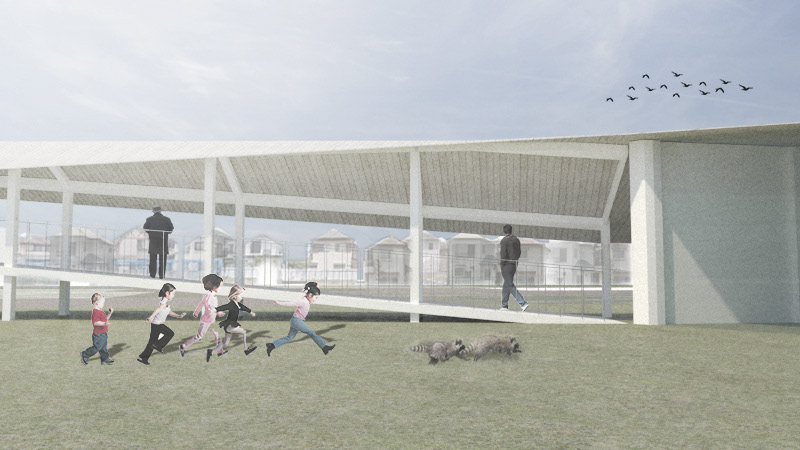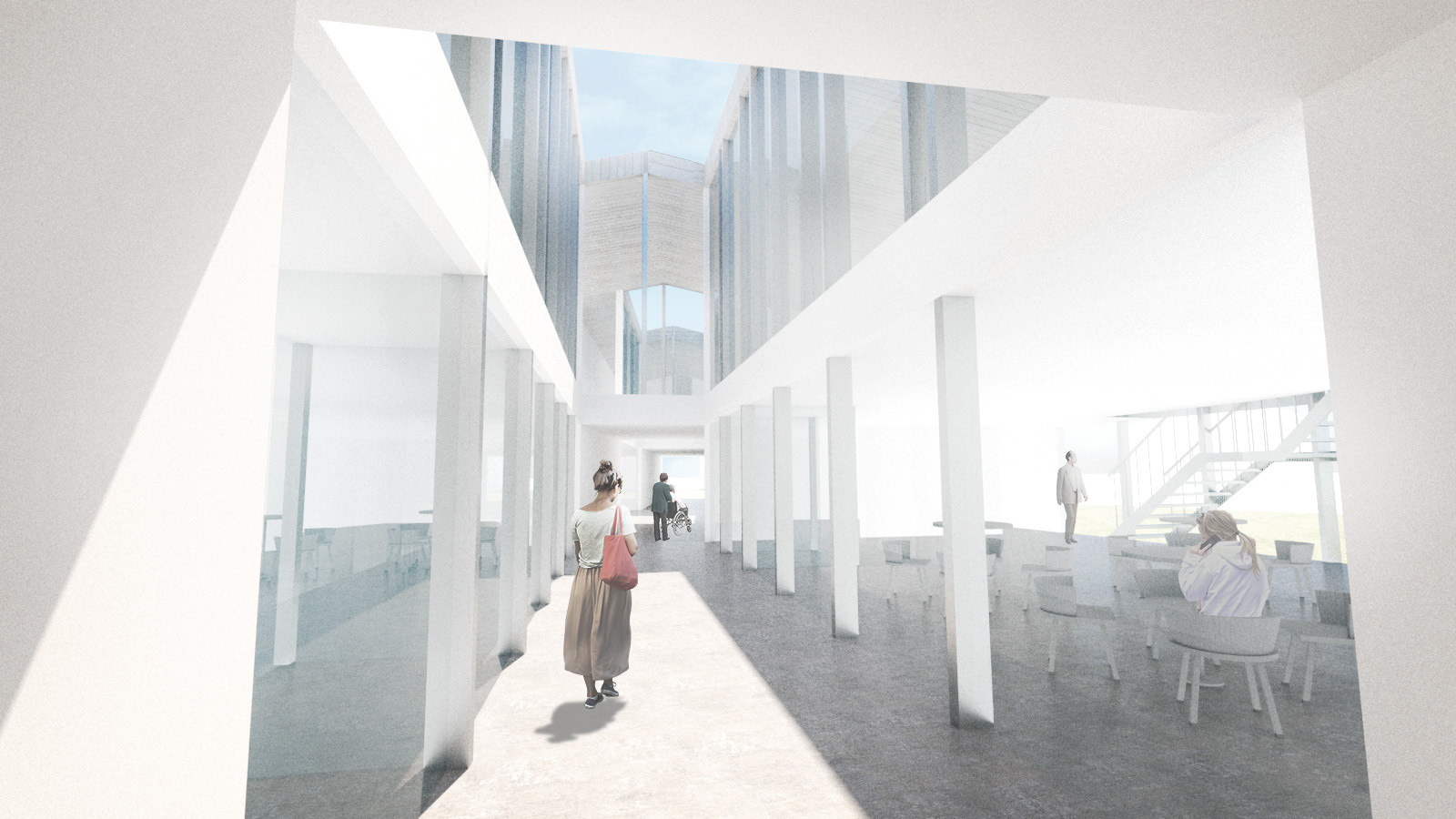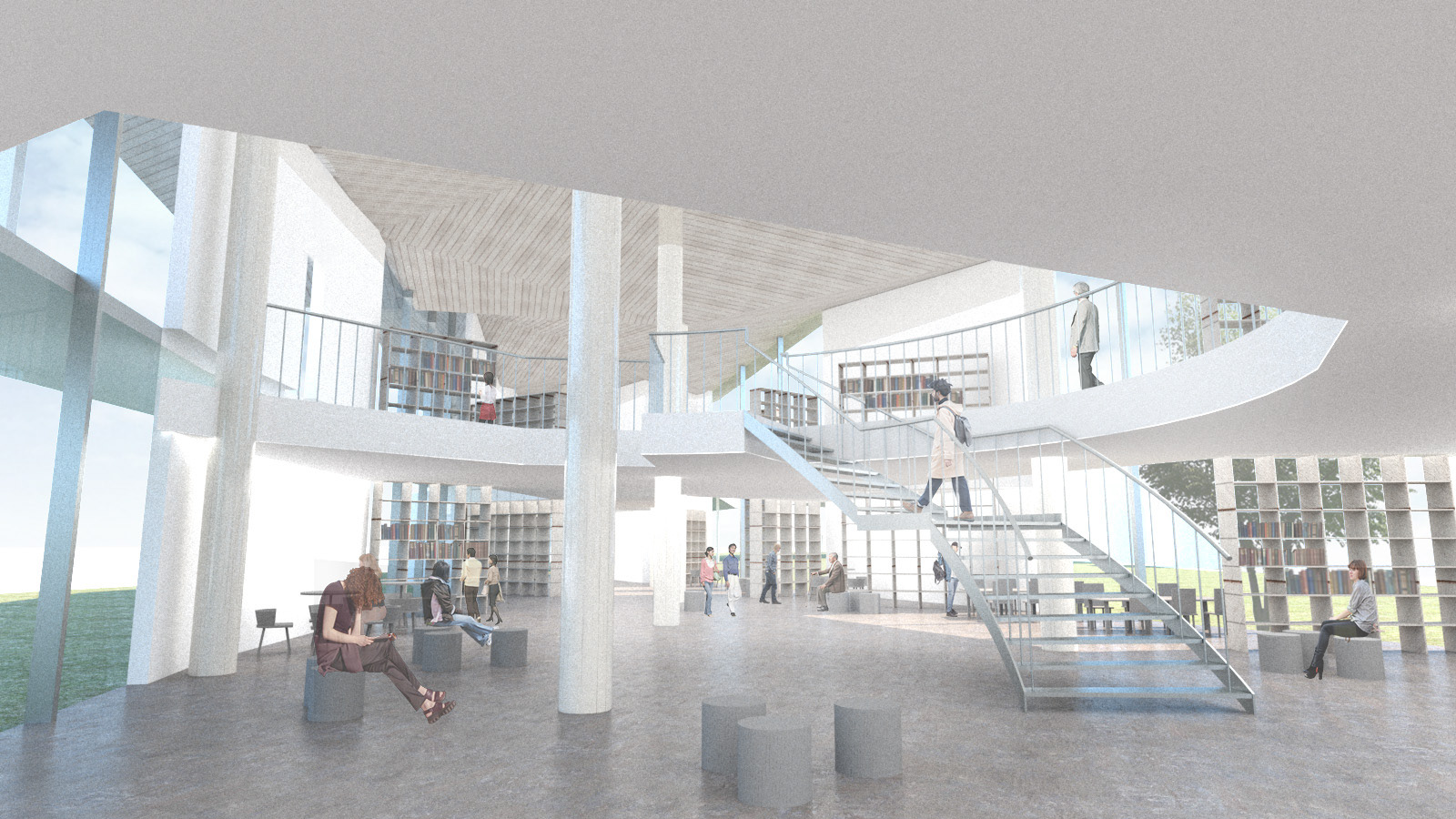In Kodaira City, located in the western suburbs of Tokyo, there is a scene of long, narrow city blocks with a frontage of about 30 meters and extending 400 meters to 1 km from north to south. This is a remnant of the development of roadside villages in the early Edo period, and shows that human activity was part of the natural cycle.
Today, it is difficult for humans to maintain a connection with nature. Perhaps architecture is for humans. Therefore, I will create a place where humans and nature overlap here in Kodaira, away from the city center and maintaining a moderate distance from nature.
Birds, insects, and other animals will come and go between the green base and the green corridor to form a living area. With this architecture, I intended to enrich human activities and at the same time help animals to expand their network. In order to keep the distance between humans and nature, one of the many long and narrow city blocks is shared as a green corridor. Even if we can't see each other directly, there will always be a connection.
Life in Suburban Area
Kodaira City is located approximately 45 minutes to an hour away from the center of Tokyo. The suburbs of Tokyo are home to families with children and elderly people, and a relaxed atmosphere prevails. Farmland has been converted into residential land, so that farmland and residential land are next to each other, and some people work in the city while farming. Living there has the potential to combine engaging in tertiary industry with a fundamental life in contact with nature.
Strip-Paper-like Blocks
Kodaira City was created in the early Edo period (1603-1868) when the Tamagawa Canal was built to make the land available for farming, and Ogawa Village was born. In order for everyone to enjoy the benefits of the Tamagawa canal equally, the road village was developed with a long and narrow land layout perpendicular to the Ome Highway that runs parallel to the Tamagawa canal, and the pattern of strip farmland has been carried over to the present day. In the long and narrow land, houses were built facing the Ome Kaido road, and the field land continued everywhere, with wooded areas beyond. The dead leaves of the thickets were used as humus, and there used to be an interaction of humans tending the thickets.
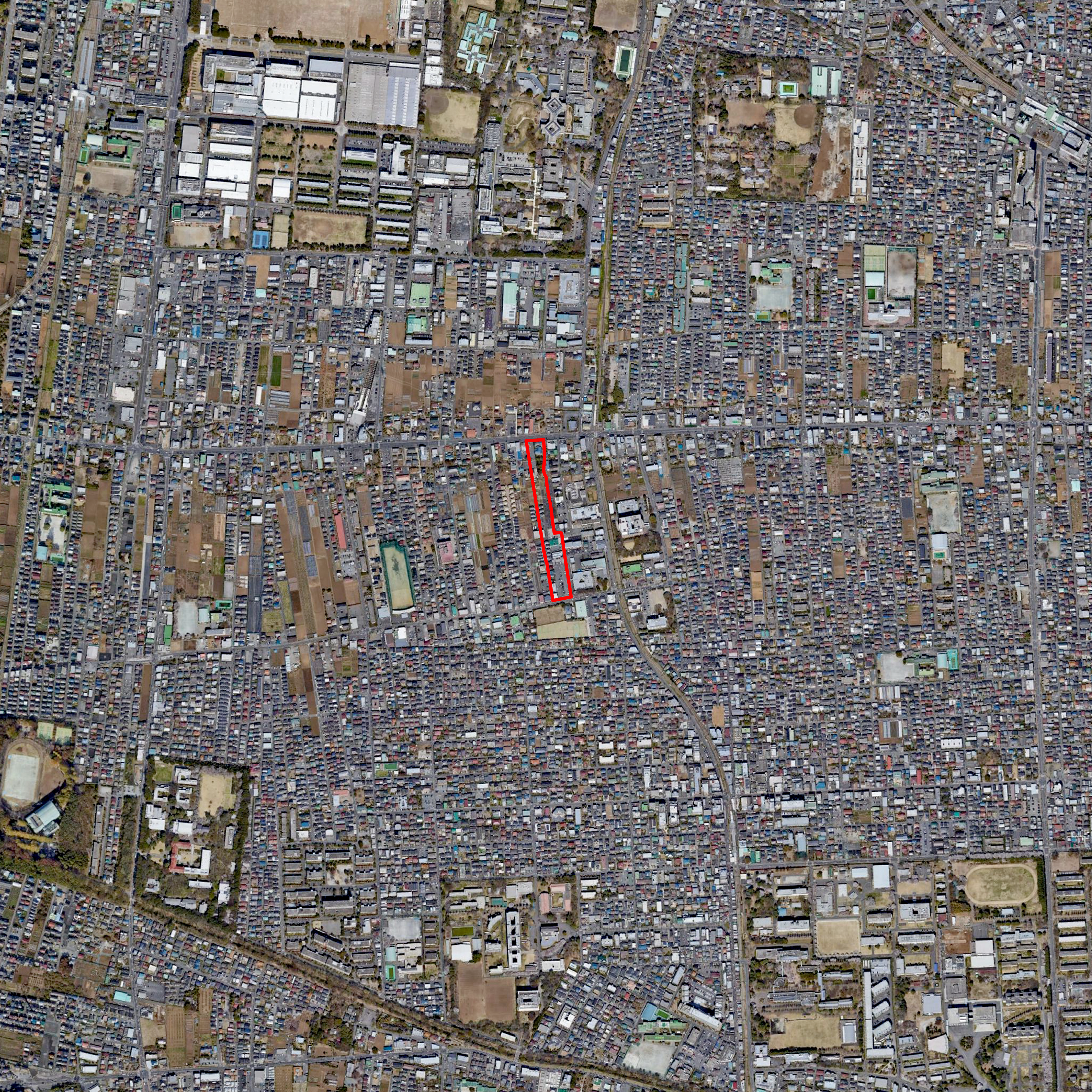
The site faces Ome Highway and is about 30 meters in size from east to west and about 380 meters from north to south.

In 1944, there are a lot of agricultural lands. Also, we cand see green path along the irrigation channel clearly.
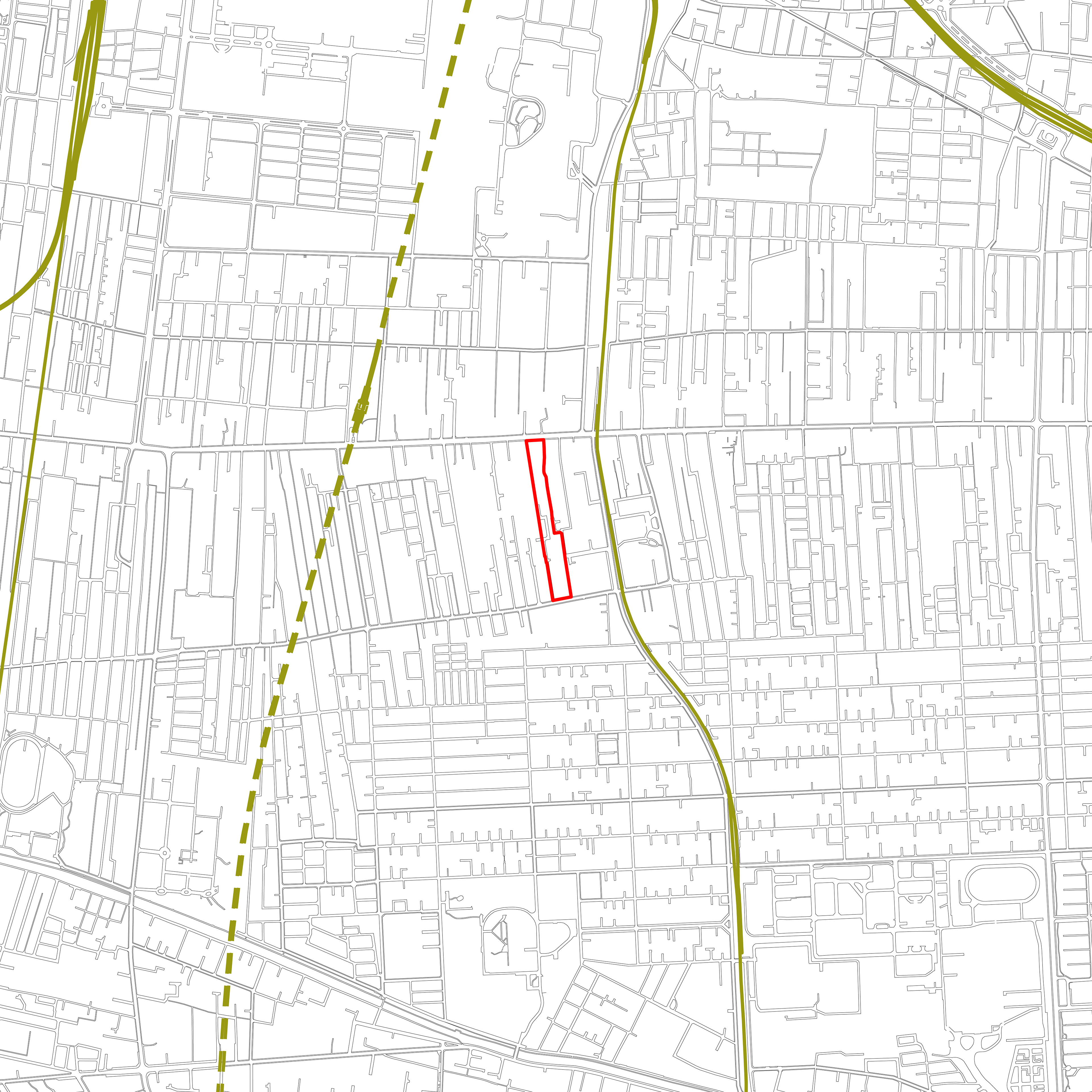
There are two nearby stations, and the site is easily accessible from the station.

There is a line of greenery along Ogawa irrigation channel, Tamagawa canal, and strips of land.
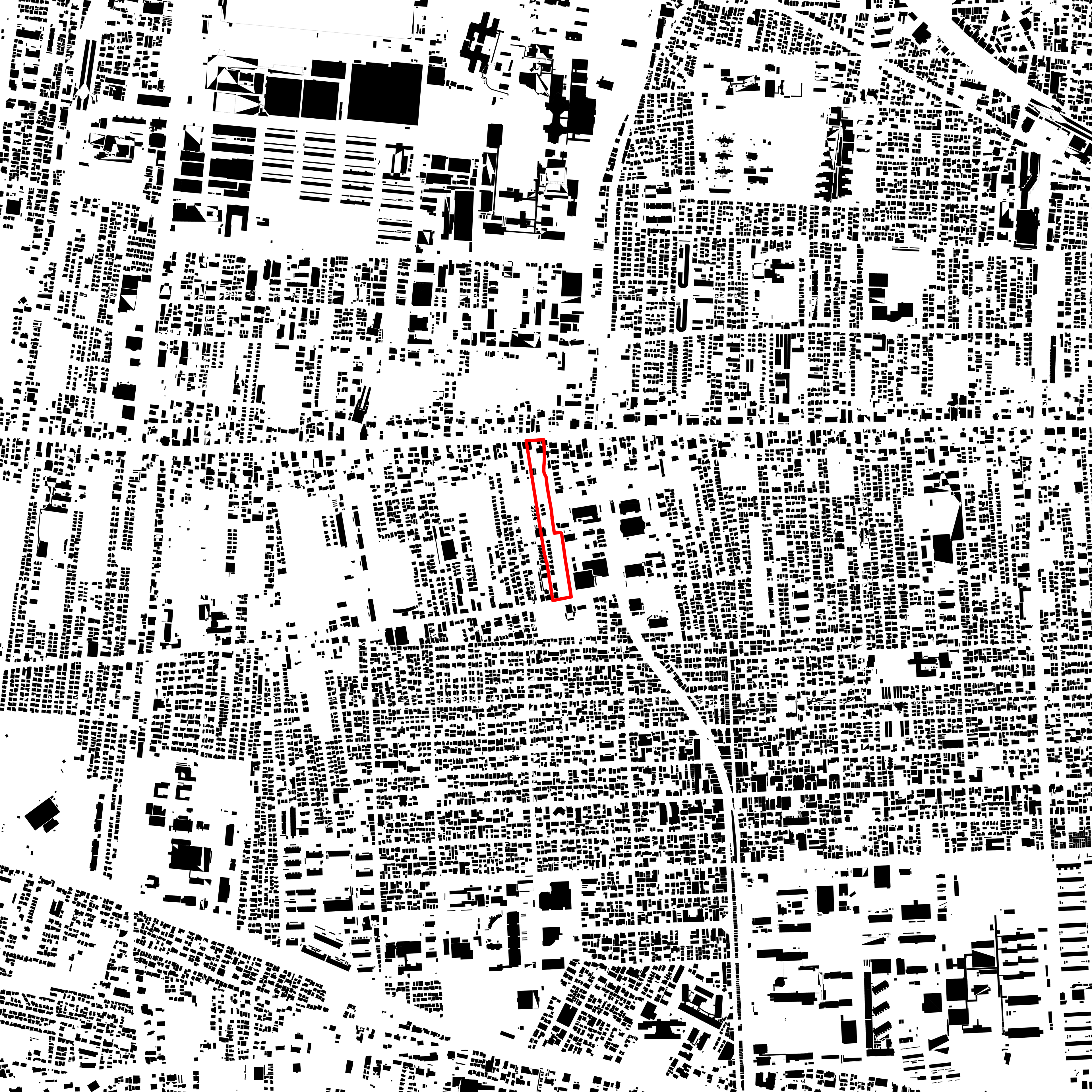
The south of the site is residential, and the west is a mix of residential and agricultural land.
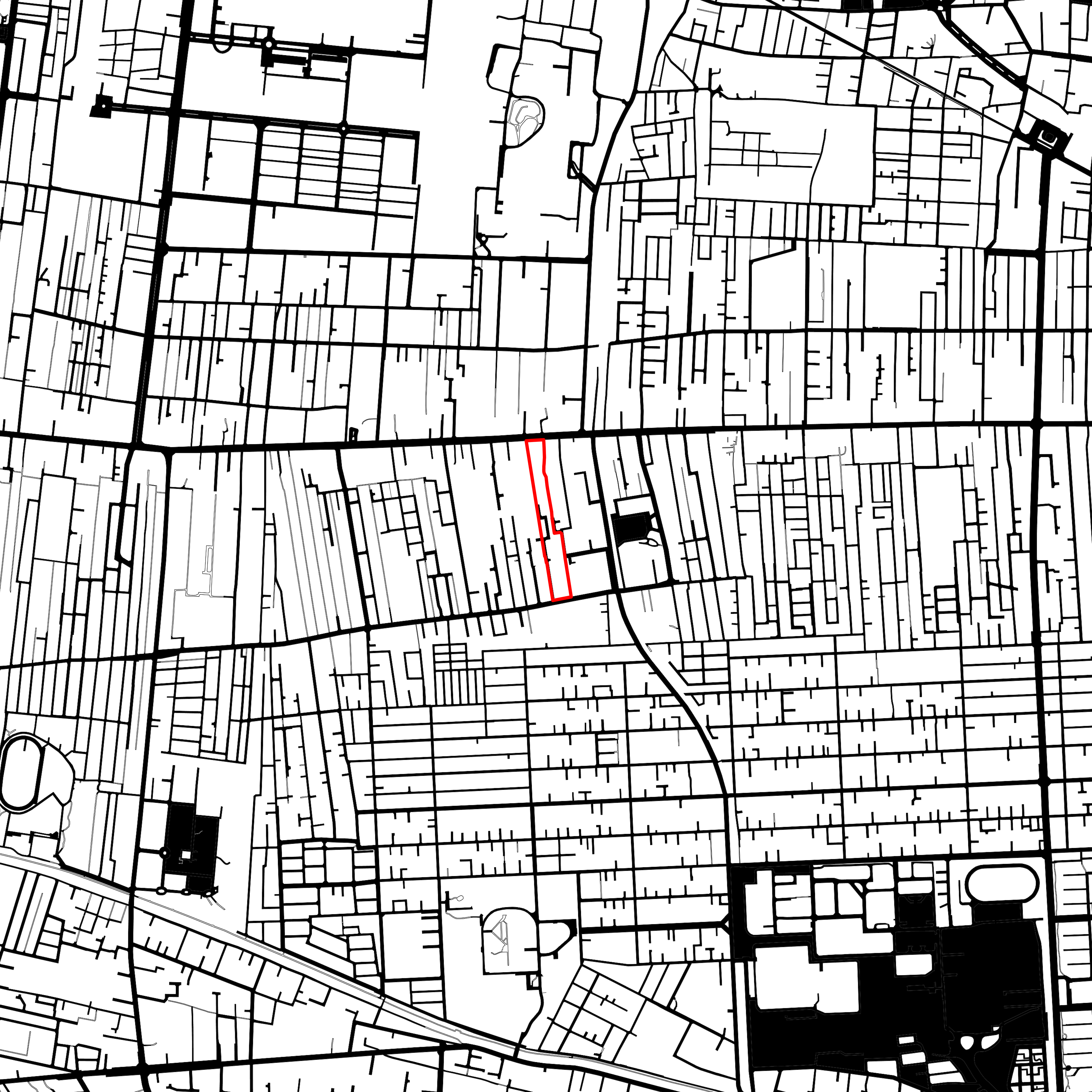
Ome Kaido runs east to west, and you can see that the city blocks are formed along it.
Opengarden
There are many open gardens in Kodaira, where gardeners open their gardens to the public. In addition, Kodaira City maintains a greenway, so many kinds of plants can be seen in Kodaira. In addition to the greenery remaining in the water supply and farmland, these green hubs contribute to the formation of an ecological network, and residents can enjoy these greenery on foot.
"Public" Program
There are various public facilities around the site, such as the city hall, library, community center, and welfare and health center. However, the library and community center adjacent to the site are deteriorating. Therefore, the library and community center will be relocated to this green corridor, making it possible for people to stop by during their walks. The kindergarten on the site will also be relocated to the green corridor, aiming to provide emotional education in a green environment. In this way, the corridor will become a public building for all creatures, from children to the elderly, insects, birds, frogs, and raccoons.
Ecological Netwrok
Ecological network is an important concept for the conservation of biodiversity. Ecological networks are formed by interconnecting centers of biodiversity with excellent natural conditions (core areas) and ecological corridors that allow the movement and dispersal of wildlife. In Kodaira City, organisms have already been dispersed from Tama Lake in the northwest through greenways. This site, located in the center of Kodaira City, will be used as a corridor to connect the Ogawa Water in the north with the Tamagawa Water in the south, linking the corridors in a circular pattern to further promote the dispersion of organisms.
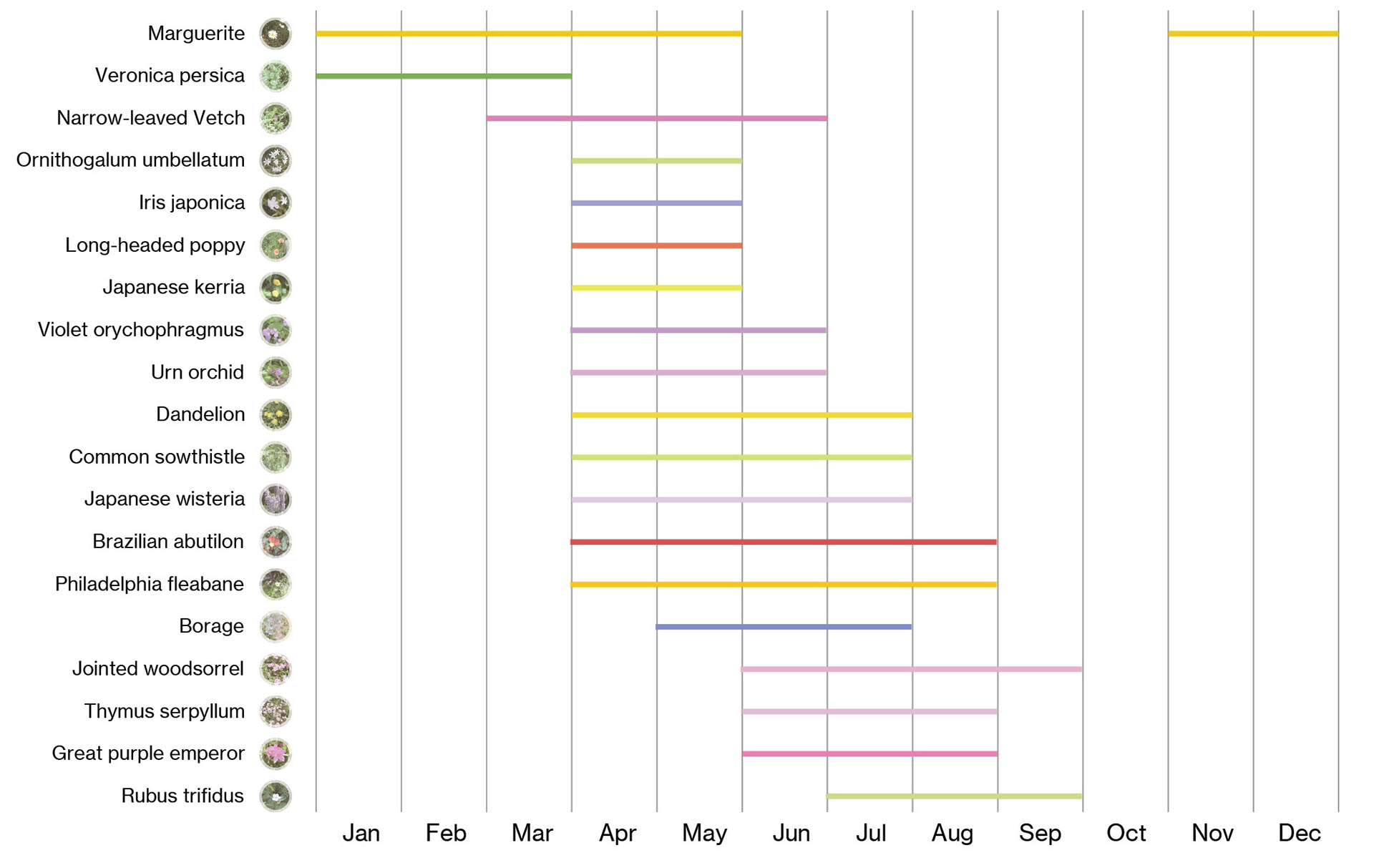
Kodaira Vegetation Seasons

Overlay Nature with Architecture
